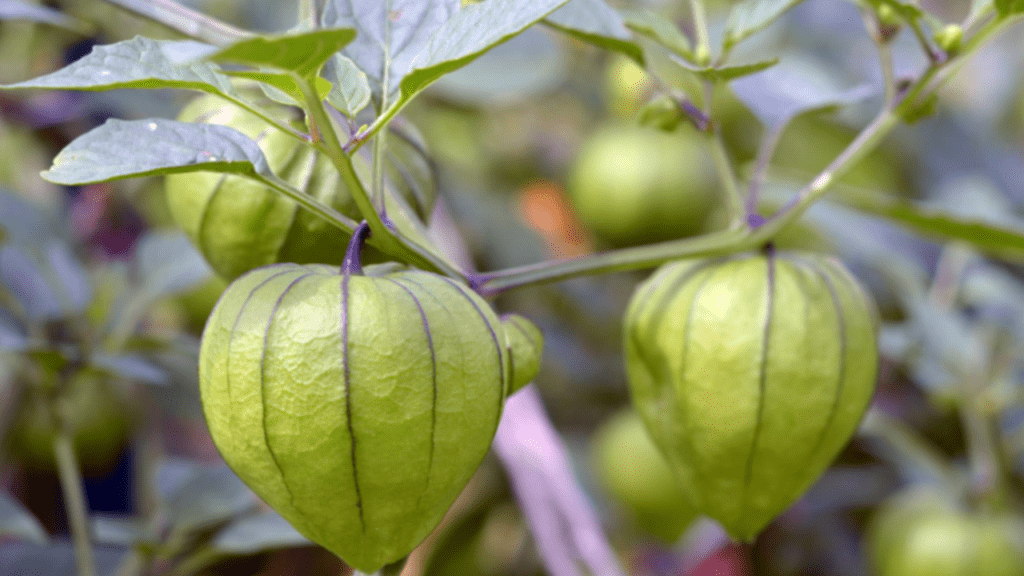
How to Care for a Tomatillo Plant: A Beginner’s Guide
Caring for a tomatillo plant can be a rewarding experience, especially if you are new to gardening. In this beginner’s guide, we will cover everything you need to know about planting, watering, fertilizing, and harvesting your tomatillo plant. We will also discuss common pests and diseases to watch out for and how to address them. By the end of this article, you will have all the information you need to successfully care for your tomatillo plant and enjoy a bountiful harvest.
Table of Contents
ToggleUnderstanding the Tomatillo Plant
The tomatillo plant is a member of the nightshade family and is closely related to tomatoes. It is a small, green fruit that is enclosed in a papery husk. Tomatillos are known for their tangy, citrusy flavor and are commonly used in Mexican cuisine to make salsas and sauces. When growing tomatillos, it is important to plant them in a sunny location with well-drained soil. They require regular watering, especially during the hot summer months. Fertilizing the plants with a balanced fertilizer can also help them thrive and produce an abundant crop. It is important to keep an eye out for common pests such as aphids and caterpillars, as well as diseases like blight and powdery mildew, and address them promptly to ensure the health of the plant. Harvesting the tomatillos when they are firm and fully grown is essential for the best flavor. With proper care and attention, you can enjoy a successful harvest of delicious tomatillos from your garden.
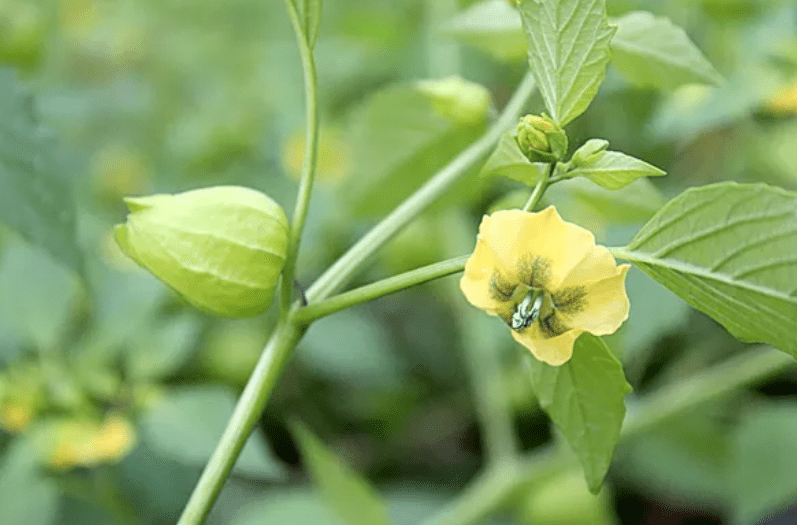
Choosing the Right Location
Subheading: “Where to Plant Your Tomatillo Plant”
When it comes to growing tomatillos, choosing the right location is key. Tomatillos thrive in sunny locations with well-drained soil. They require regular watering, especially during the hot summer months, to ensure they have enough moisture to grow and produce a bountiful crop. Additionally, fertilizing the plants with a balanced fertilizer can help them thrive and produce an abundant harvest. It’s important to keep an eye out for common pests such as aphids and caterpillars, as well as diseases like blight and powdery mildew, and address them promptly to ensure the health of the plant. When it comes time to harvest, be sure to pick the tomatillos when they are firm and fully grown for the best flavor. With proper care and attention, you can enjoy a successful harvest of delicious tomatillos from your garden.
Ideal soil conditions: well-draining, slightly acidic to neutral soil.
Tomatillos thrive in well-draining, slightly acidic to neutral soil. When choosing the right location to plant your tomatillo plant, it’s important to consider these soil conditions. In addition to the soil, tomatillos also thrive in sunny locations. They require regular watering, especially during the hot summer months, to ensure they have enough moisture to grow and produce a bountiful crop. Fertilizing the plants with a balanced fertilizer can also help them thrive and produce an abundant harvest. It’s important to keep an eye out for common pests such as aphids and caterpillars, as well as diseases like blight and powdery mildew, and address them promptly to ensure the health of the plant. When it comes time to harvest, be sure to pick the tomatillos when they are firm and fully grown for the best flavor. With proper care and attention, you can enjoy a successful harvest of delicious tomatillos from your garden.
Sunlight requirements: full sun exposure (6-8 hours daily).
Tomatillo plants require full sun exposure, meaning they need 6-8 hours of sunlight daily to thrive. When choosing a location to plant your tomatillo, it’s important to ensure that it will receive ample sunlight throughout the day. This will help the plant to grow and produce a bountiful crop of delicious tomatillos. In addition to sunlight, tomatillos also require regular watering, especially during the hot summer months, to ensure they have enough moisture to flourish. Fertilizing the plants with a balanced fertilizer can also aid in their growth and productivity. It’s important to keep an eye out for common pests such as aphids and caterpillars, as well as diseases like blight and powdery mildew, and address them promptly to ensure the health of the plant. When it comes time to harvest, be sure to pick the tomatillos when they are firm and fully grown for the best flavor. With proper care and attention to sunlight and other growing conditions, you can enjoy a successful harvest of delicious tomatillos from your garden.
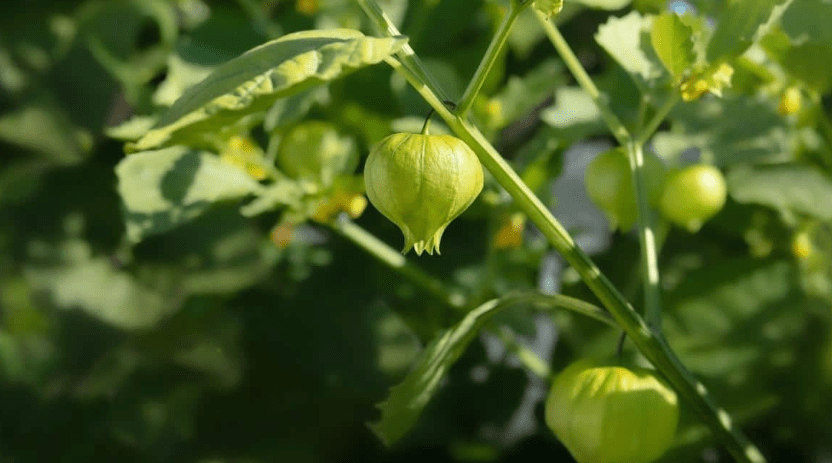
Planting Tomatillo Seeds or Seedlings
Subheading: “How to Start Your Tomatillo Plant”
When starting your tomatillo plant, it’s important to choose a location that receives ample sunlight throughout the day. This will help the plant to grow and produce a bountiful crop of delicious tomatillos. In addition to sunlight, tomatillos also require regular watering, especially during the hot summer months, to ensure they have enough moisture to flourish. Fertilizing the plants with a balanced fertilizer can also aid in their growth and productivity. Keeping an eye out for common pests such as aphids and caterpillars, as well as diseases like blight and powdery mildew, is important, and addressing them promptly will ensure the health of the plant. When it comes time to harvest, be sure to pick the tomatillos when they are firm and fully grown for the best flavor. With proper care and attention to sunlight and other growing conditions, you can enjoy a successful harvest of delicious tomatillos from your garden. Planting tomatillo seeds or seedlings is a great way to start your tomatillo plant and enjoy the fruits of your labor.
Step-by-step guide to planting seeds indoors or directly in the garden.
Planting tomatillo seeds indoors or directly in the garden can be a rewarding experience. To start, you’ll want to prepare the soil by adding compost or organic matter to ensure that it is nutrient-rich and well-draining. Once the soil is ready, you can plant the seeds about ¼ inch deep and space them about 2-3 feet apart if planting directly in the garden. If you are starting the seeds indoors, you can use seed trays or small pots and transplant them into the garden once they have grown to about 2-3 inches tall.
Tomatillos require full sunlight, so be sure to place them in a sunny spot in your garden or provide adequate light if growing them indoors. They also need regular watering, especially during the hot summer months, to ensure they have enough moisture to flourish. Fertilizing the plants with a balanced fertilizer can also aid in their growth and productivity.
It’s important to keep an eye out for common pests such as aphids and caterpillars, as well as diseases like blight and powdery mildew. Addressing these issues promptly will ensure the health of the plant.
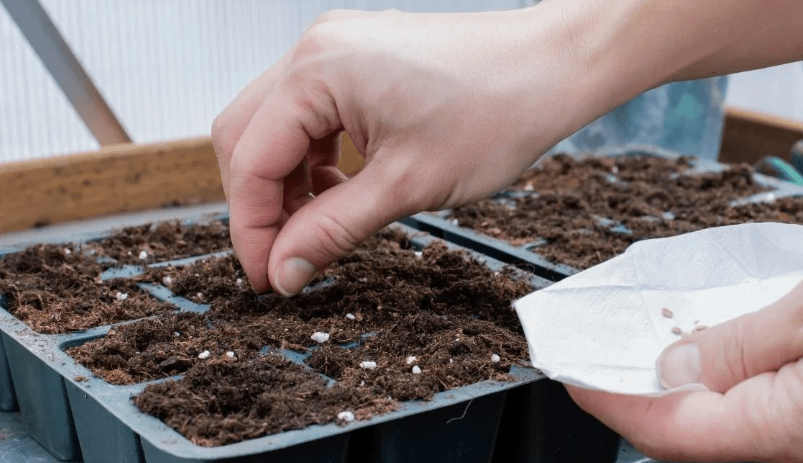
When it comes time to harvest, be sure to pick the tomatillos when they are firm and fully grown for the best flavor. With proper care and attention to sunlight and other growing conditions, you can enjoy a successful harvest of delicious tomatillos from your garden. Whether you choose to start your tomatillo plants indoors or plant them directly in the garden, following these steps will help you grow healthy and productive tomatillo plants.
When and how to transplant seedlings.
Tomatillo seedlings should be transplanted into the garden after the last frost date in your area. Before transplanting, it’s important to harden off the seedlings by gradually exposing them to outdoor conditions for a week or two. When transplanting, make sure to choose a sunny location with well-drained soil. Dig a hole slightly larger than the root ball of the seedling and gently place the plant in the hole, covering the roots with soil. Water the transplanted seedlings thoroughly to help them establish in their new location.
It’s important to continue caring for the transplanted seedlings after they have been planted in the garden. They will need regular watering, especially during the hot summer months, to ensure they have enough moisture to flourish. Fertilizing the plants with a balanced fertilizer can also aid in their growth and productivity. It’s important to keep an eye out for common pests such as aphids and caterpillars, as well as diseases like blight and powdery mildew. Addressing these issues promptly will ensure the health of the plant.
When it comes time to harvest, be sure to pick the tomatillos when they are firm and fully grown for the best flavor. With proper care and attention to sunlight and other growing conditions, you can enjoy a successful harvest of delicious tomatillos from your garden. Whether you choose to start your tomatillo plants indoors or plant them directly in the garden, following these steps will help you grow healthy and productive tomatillo plants.
Watering and Feeding Your Tomatillo Plant
Subheading: “Essential Watering Tips for a Healthy Tomatillo Plant”
Tomatillo plants need regular watering, especially during the hot summer months, to ensure they have enough moisture to flourish. It’s important to make sure the soil is consistently moist, but not waterlogged. Fertilizing the plants with a balanced fertilizer can also aid in their growth and productivity. It’s important to keep an eye out for common pests such as aphids and caterpillars, as well as diseases like blight and powdery mildew. Addressing these issues promptly will ensure the health of the plant. When it comes time to harvest, be sure to pick the tomatillos when they are firm and fully grown for the best flavor. With proper care and attention to sunlight and other growing conditions, you can enjoy a successful harvest of delicious tomatillos from your garden. Whether you choose to start your tomatillo plants indoors or plant them directly in the garden, following these steps will help you grow healthy and productive tomatillo plants. Remember that consistent watering and feeding are key to the health and success of your tomatillo plant.
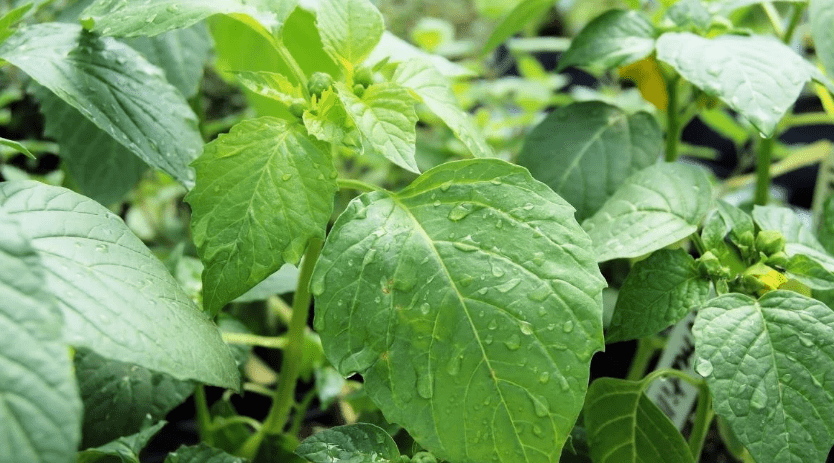
How often to water and the importance of consistent moisture.
Watering your plants is a crucial aspect of their care. The frequency of watering will depend on the specific needs of the plants and the environmental conditions. It’s important to keep the soil consistently moist, as fluctuations in moisture levels can stress the plants and affect their growth. A good rule of thumb is to water the plants when the top inch of soil feels dry to the touch. Be mindful of overwatering, as this can lead to root rot and other issues. Additionally, consider using a soaker hose or drip irrigation system to provide a consistent level of moisture to the plants. This will help to promote healthy root development and overall plant growth. In addition to watering, it’s important to provide your plants with regular feeding. Fertilizing the plants with a balanced fertilizer can aid in their growth and productivity. This will help to ensure that the plants have the nutrients they need to thrive. By maintaining consistent moisture and providing proper nutrition, you can help your plants to reach their full potential and produce a bountiful harvest.
Mulching tips to retain soil moisture and prevent weeds.
Mulching is a great way to retain soil moisture and prevent weeds in your garden. When applying mulch, be sure to use a layer that is 2-4 inches thick to effectively retain moisture and suppress weed growth. Organic mulches, such as wood chips, straw, or compost, are great options as they break down over time and improve the soil structure. Be careful not to overwater your plants, as this can lead to root rot and other issues. Consider using a soaker hose or drip irrigation system to provide a consistent level of moisture to the plants, promoting healthy root development and overall plant growth. Additionally, regular feeding of your plants with a balanced fertilizer can aid in their growth and productivity, ensuring they have the nutrients they need to thrive. By maintaining consistent moisture and providing proper nutrition, your plants will be able to reach their full potential and produce a bountiful harvest.
Fertilizing schedule: what type of fertilizer to use and when to apply it.
When it comes to fertilizing your garden, it’s important to choose the right type of fertilizer and apply it at the right time. Organic fertilizers, such as compost or manure, are great for providing slow-release nutrients to your plants. You can apply these types of fertilizers in the spring and fall to help support healthy plant growth. In addition, you can also use synthetic fertilizers, which provide a quick boost of nutrients to your plants. These can be applied during the growing season, following the manufacturer’s instructions for application rates. It’s important to avoid over-fertilizing, as this can lead to nutrient imbalances and harm your plants. To ensure you’re providing the right nutrients at the right time, consider creating a fertilizing schedule based on the needs of your specific plants. This can help you stay organized and ensure that your plants are getting the nutrients they need to thrive. By taking a proactive approach to fertilizing and providing the proper nutrients to your plants, you can help support healthy growth and a bountiful harvest in your garden.
Common Pests and Diseases
Subheading: “How to Protect Your Tomatillo Plant from Pests and Diseases”
There are a few ways to protect your tomatillo plants from pests and diseases. One of the most effective methods is to use fertilizer to support healthy plant growth. You can use organic fertilizers in the spring and fall to provide the nutrients your plants need. Synthetic fertilizers can also be used during the growing season, following the manufacturer’s instructions for application rates. It’s important to avoid over-fertilizing, as this can harm your plants. Creating a fertilizing schedule based on your plants’ specific needs can help you provide the right nutrients at the right time. By taking a proactive approach to fertilizing, you can support healthy growth and a bountiful harvest in your garden. Additionally, it’s important to be aware of common pests and diseases that can affect tomatillo plants, and take steps to prevent or treat them as needed. By staying vigilant and providing proper care, you can protect your tomatillo plants and help them thrive.
Common pests: aphids, beetles, and how to deal with them.
Aphids and beetles are common pests that can damage your plants. One way to deal with them is to use organic pest control methods, such as introducing natural predators like ladybugs or lacewings to your garden. You can also use insecticidal soaps or neem oil to target and eliminate these pests. It’s important to regularly inspect your plants for signs of infestation and take action as soon as you notice any pests. In addition, practicing good garden hygiene, such as removing any dead or diseased plant material, can help prevent pest infestations. By being proactive and implementing these strategies, you can effectively manage and control common pests in your garden.
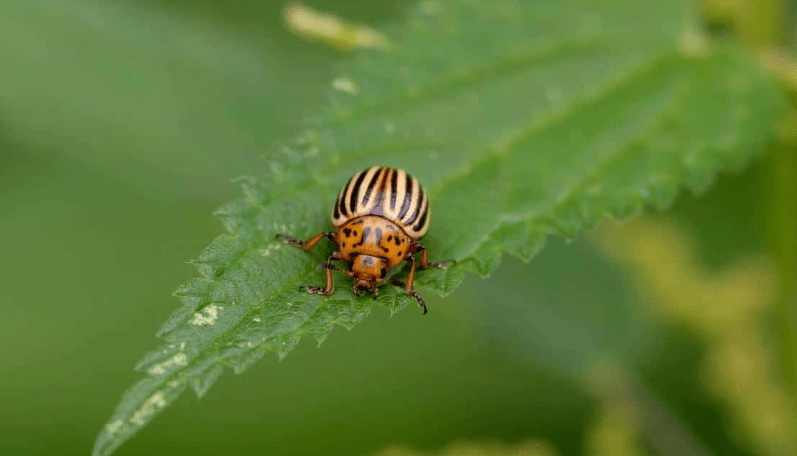
Identifying and treating diseases like early blight and root rot.
Identifying and treating diseases like early blight and root rot is crucial for maintaining the health of your plants. Early blight is a common fungal disease that affects tomato and potato plants, causing dark, sunken lesions on the leaves and stems. To treat early blight, it’s important to remove and destroy any infected plant material, as well as applying fungicides to prevent the spread of the disease. Root rot, on the other hand, is a condition caused by waterlogged soil and can lead to the decay of the plant’s roots. To prevent root rot, it’s essential to ensure proper drainage and avoid overwatering your plants. Additionally, using a well-draining soil mix and providing adequate air circulation can help reduce the risk of root rot. In terms of common pests, aphids and beetles are known to cause damage to plants. Utilizing natural pest control methods, such as introducing beneficial insects like ladybugs or lacewings, can help manage aphid and beetle infestations. Furthermore, using organic insecticidal soaps or neem oil can also be effective in targeting and eliminating these pests. Regularly inspecting your plants for signs of infestation and practicing good garden hygiene by removing any diseased plant material can aid in preventing pest infestations. By being proactive in identifying and treating diseases and pests, you can maintain the health and vitality of your garden.
Harvesting Tomatillos
Can be an exciting and rewarding experience. When tomatillos are ripe, they will fill their husks and begin to split, signaling that they are ready to be harvested. It’s important to handle tomatillos with care when harvesting to avoid damaging the delicate husks. Gently twist the tomatillos off the plant, being careful not to pull too hard. Once harvested, tomatillos can be stored in their husks for up to a month in a cool, dry place. If you plan to use them sooner, remove the husks and store the tomatillos in the refrigerator for up to two weeks. When harvesting tomatillos, it’s important to keep in mind that they are sensitive to frost and should be harvested before the first frost of the season. By following these tips, you can ensure a successful and enjoyable tomatillo harvest.
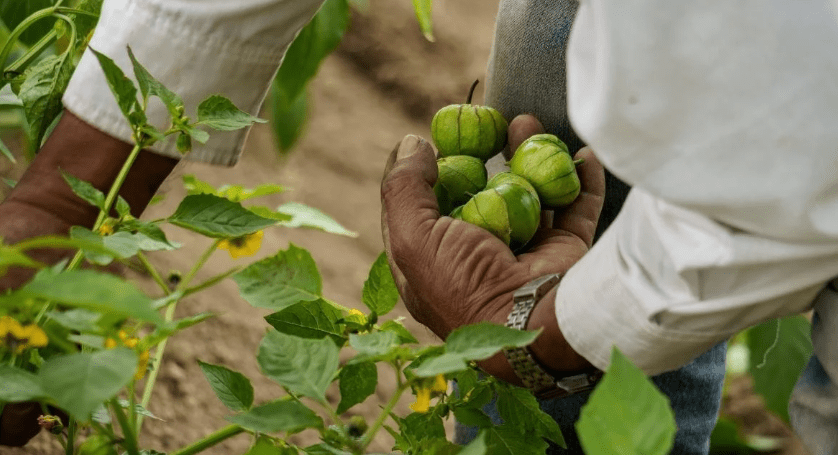
Conclusion
In conclusion, caring for a tomatillo plant requires attention to detail and regular maintenance. By following the tips and guidelines provided in this article, you can ensure that your tomatillo plant thrives and produces a bountiful harvest. It’s important to stay vigilant for signs of pests and diseases and address them promptly to prevent any damage to your plants. With proper care and attention, you can enjoy delicious tomatillos straight from your own garden.
Frequently asked questions And Answer
Tomatillo plants need regular watering, especially during hot and dry weather. It’s important to keep the soil consistently moist, but not waterlogged.
Tomatillo plants thrive in full sunlight, so it’s best to place them in a spot where they can receive at least 6-8 hours of direct sunlight each day.
Yes, tomatillo plants benefit from regular fertilization. You can use a balanced fertilizer once a month during the growing season to promote healthy growth and fruit production.
Tomatillo plants can become quite tall and top-heavy, so it’s important to provide support for them. You can use stakes, cages, or trellises to help support the plants as they grow.
Tomatillos are ready to harvest when the fruit fills out the husk and the husk begins to split. The fruit should be firm and green, and it’s best to harvest them before they turn yellow or purple.
Yes, tomatillo plants can be grown in containers as long as the container is large enough to accommodate the plant’s root system and has good drainage.
Tomatillo plants can be prone to certain pests and diseases, including aphids, whiteflies, and fungal infections. It’s important to monitor the plants regularly and take preventive measures to protect them.
Tomatillos are commonly used in salsa verde, soups, stews, and sauces. They have a tangy flavor and are a staple ingredient in Mexican and Latin American cuisine.
